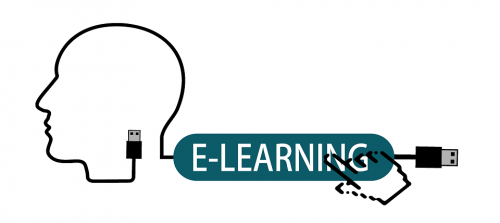
In the last five years we’ve spoken of the slowing growth of e-learning in the US and Europe, who were the early adopters of e-learning, and the corporate markets use of e-learning who were the predominant users. We predicted huge growth in the use of mobile learning and the increasing use of gamification and virtual and augmented reality. So where are we now and what does the future look like?
 Since 2000 e-learning has been one of the fastest growing industries in the world driven by factors that have changed over time, and continue to change contributing to the sustainability of growth over the next forecasted period. Use of the internet, improvements to connectivity, mobile device usage and more recently a demand for better productivity in business and reduction in our carbon footprint are all drivers for the growth in e-learning.
Since 2000 e-learning has been one of the fastest growing industries in the world driven by factors that have changed over time, and continue to change contributing to the sustainability of growth over the next forecasted period. Use of the internet, improvements to connectivity, mobile device usage and more recently a demand for better productivity in business and reduction in our carbon footprint are all drivers for the growth in e-learning.
Globally in 2014 there were 2.6 billion internet users and now there are over 4 billion, which is approximately 57% of the global population. Africa has seen the largest growth in internet use since 2000, up by a staggering 11,481%, and along with Asia, whose population accounts for over 50% of the world’s internet use, is the main driver of the world’s growth in education expenditure. Of this growth, higher education accounts for approximately 80%, lifelong learning 8%, corporate 6% and main stream education 8%. Expenditure on global education is set to grow from approximately US$6 trillion in 2019 to at least US$10 trillion by 2030 fuelled by population growth and the increasing use of technology in learning. As countries’ economies develop and internet use becomes more widespread there are far more opportunities for education and training.
 There are now over 5 billion mobile phone users equating to 67% of the population, and 3.2 billion are using them for social media. So with increased access to the internet, smart phones and improved 4G it’s not surprising that the mobile learning market is estimated to grow to $38billion by 2020. But is the prediction backed up by the positive impact of mobile learning? Well the answer is yes. We are certainly seeing increased use of mobile learning in sectors with a mobile workforce, such as health and social care, due to the increased flexibility of delivering training anywhere and at any time. Global Industry Analysts research on mobile learning found a number of factors that contributed to up to 40% improved learning productivity and higher successful completion of studies, including flexibility and variety of content e.g. video and podcasts. Tablets and smart phones are having a major impact on the accessibility of learning and growth of e-learning. This is particularly seen in Africa where in 2017, 444 million people were mobile subscribers and it is predicted that by 2025 this will have grown to 634 million. Their e-learning market reached US$792 Million in 2018, a CAGR of around 14% during the period 2011-2018 and is predicted to reach US$1,813 Million by 2024. In South Africa this year the value of the smartphone market climbed by nearly 3% to around US$570 million and by 2023 their e-learning market is expected to have grown from approximately US$198 Million in 2018 to US$490 Million, which is substantial growth.
There are now over 5 billion mobile phone users equating to 67% of the population, and 3.2 billion are using them for social media. So with increased access to the internet, smart phones and improved 4G it’s not surprising that the mobile learning market is estimated to grow to $38billion by 2020. But is the prediction backed up by the positive impact of mobile learning? Well the answer is yes. We are certainly seeing increased use of mobile learning in sectors with a mobile workforce, such as health and social care, due to the increased flexibility of delivering training anywhere and at any time. Global Industry Analysts research on mobile learning found a number of factors that contributed to up to 40% improved learning productivity and higher successful completion of studies, including flexibility and variety of content e.g. video and podcasts. Tablets and smart phones are having a major impact on the accessibility of learning and growth of e-learning. This is particularly seen in Africa where in 2017, 444 million people were mobile subscribers and it is predicted that by 2025 this will have grown to 634 million. Their e-learning market reached US$792 Million in 2018, a CAGR of around 14% during the period 2011-2018 and is predicted to reach US$1,813 Million by 2024. In South Africa this year the value of the smartphone market climbed by nearly 3% to around US$570 million and by 2023 their e-learning market is expected to have grown from approximately US$198 Million in 2018 to US$490 Million, which is substantial growth.
 As governments around the world increase spending on education, embrace technology and innovation and recognise the transformational impact of online learning on organisations and individuals, there is an increased vision for a population with knowledge, skills and opportunities. The Vietnamese government has pledged to invest $415million by the end of 2020 to improve ICT infrastructure so that the demand for e-learning content can be facilitated. Vietnam has enjoyed fantastic e-learning growth between 2013 and 2018 with a CAGR of 36.7% and despite predicted growth slowing to a CAGR of 20.2% by 2023 this is still exceptional growth. The South African government spent 6.2% of GDP on education in 2018, compared to 4.16% of GDP spent in the UK, and has an ICT strategy and budget that focuses on increasing ‘the use of ICT to facilitate socio-economic justice and inclusion, improve competitiveness and prepare for the 4th / Digital Industrial Revolution’. In the period 2013 to 2018 e-learning growth in South Africa had a CAGR of 15.4% and the forecast for 2023 is a CAGR of 12.6%. It is corporate training that dominates the use of e-learning in the country with 55% of the market share, with higher education having the second highest share of its use. Similarly in the US the corporate share of the e-learning market is the largest at around 40% due to approximately 77% of US corporates using e-learning to train employees and experiencing high employee productivity as a result of using it. Rather than slowing, as was predicted in the last forecast period, by 2022 the US e-learning market is predicted to reach US$35 billion. In contrast, Vietnam and South Africa’s forecast for growth is predicted to slightly drop, whereas in Malaysia it is pretty much expected to stay the same, at a CAGR of 16%. Rather than corporates being Malaysia’s largest users of e-learning it is higher education that uses the most, the same as in Europe. Interestingly 93% of internet users in Malaysia access the internet via their mobile device so mobile learning is the norm, much the same as it is in Africa.
As governments around the world increase spending on education, embrace technology and innovation and recognise the transformational impact of online learning on organisations and individuals, there is an increased vision for a population with knowledge, skills and opportunities. The Vietnamese government has pledged to invest $415million by the end of 2020 to improve ICT infrastructure so that the demand for e-learning content can be facilitated. Vietnam has enjoyed fantastic e-learning growth between 2013 and 2018 with a CAGR of 36.7% and despite predicted growth slowing to a CAGR of 20.2% by 2023 this is still exceptional growth. The South African government spent 6.2% of GDP on education in 2018, compared to 4.16% of GDP spent in the UK, and has an ICT strategy and budget that focuses on increasing ‘the use of ICT to facilitate socio-economic justice and inclusion, improve competitiveness and prepare for the 4th / Digital Industrial Revolution’. In the period 2013 to 2018 e-learning growth in South Africa had a CAGR of 15.4% and the forecast for 2023 is a CAGR of 12.6%. It is corporate training that dominates the use of e-learning in the country with 55% of the market share, with higher education having the second highest share of its use. Similarly in the US the corporate share of the e-learning market is the largest at around 40% due to approximately 77% of US corporates using e-learning to train employees and experiencing high employee productivity as a result of using it. Rather than slowing, as was predicted in the last forecast period, by 2022 the US e-learning market is predicted to reach US$35 billion. In contrast, Vietnam and South Africa’s forecast for growth is predicted to slightly drop, whereas in Malaysia it is pretty much expected to stay the same, at a CAGR of 16%. Rather than corporates being Malaysia’s largest users of e-learning it is higher education that uses the most, the same as in Europe. Interestingly 93% of internet users in Malaysia access the internet via their mobile device so mobile learning is the norm, much the same as it is in Africa.
 In Europe the e-learning market is expected to grow to over $US36.25 billion during 2019 to 2023 which is a CAGR close to 15%. One of the key drivers for this growth in e-learning will be governments’ digital strategies as they up-skill the population with digital skills to prosper in a digital world. The UK government’s Digital Strategy aims to ‘support everyone to develop the skills they need to participate in the digital economy and help all businesses harness the productivity benefits of digital innovation’. It also aims to support all businesses to become as productive and competitive as those who have already adopted digital technologies. In 2018 the UK led the European e-learning market with a market share of around 28% and it is estimated that the UK will continue to contribute to the highest growth over the period 2019 to 2023.
In Europe the e-learning market is expected to grow to over $US36.25 billion during 2019 to 2023 which is a CAGR close to 15%. One of the key drivers for this growth in e-learning will be governments’ digital strategies as they up-skill the population with digital skills to prosper in a digital world. The UK government’s Digital Strategy aims to ‘support everyone to develop the skills they need to participate in the digital economy and help all businesses harness the productivity benefits of digital innovation’. It also aims to support all businesses to become as productive and competitive as those who have already adopted digital technologies. In 2018 the UK led the European e-learning market with a market share of around 28% and it is estimated that the UK will continue to contribute to the highest growth over the period 2019 to 2023.
The majority of us are extremely aware of the effects of climate change and businesses, education and individuals are looking for ways to reduce their carbon footprint. An Open University study found that the use of e-learning consumes 90% less energy and produces 85% fewer CO2 emissions than face to face training. It has also been found that there is typically a 40% to 60% reduction in typical learning time from e-learning compared to face to face training. In a case study carried out with a UK company with 5000 staff, they moved 80% of their 1000 face to face training sessions a year to online learning, and they reduced their carbon emissions by 84% from 240 tonnes a year to just 38 tonnes.
Gamification is used in many aspects of business and education to encourage a desired behaviour, e.g. to engage a potential customer or a learner undertaking training. It has been the success of gamification that resulted in a market value of $US5.5 billion in 2018 and predictions are that it will grow by a CAGR of 30.31% by 2024. In Vietnam the gamification market is forecasted to reach a CAGR of 38.1% by 2023 which is driven by the predicted internet penetration of 75% of the population and smart phone use up to 48% by 2023. Augmented and virtual reality are also predicted to grow their market share.
Research has found that the use of e-learning is having a positive impact on organisations’ increased productivity and profitability. Combine this with the advancements in online course instructional design and the on-going developments of learning management systems organisations have valuable, cost effective tools to streamline and bring efficiencies to their learning and development. The availability and access of social and mobile learning along with the vast array of learning content online has made learning more accessible than ever before to people all over the world. E-learning’s significant impact on reducing carbon emissions will hopefully encourage even more people to take it up. This has all led to a prediction that the worldwide e-learning market will reach around US$325 billion by 2025. So in conclusion, it’s shaping up very well!
Author: Carolyn Lewis, Managing Director, eLearning Marketplace Ltd
The multi award winning eLearning Marketplace is the UK’s largest provider of immediate access online training with customers in over 40 countries. Courses range from compliance and professional development to vocational qualifications up to Level 7. We work with subject matter experts and large e-learning publishers to bring our customers a unique catalogue of over 2000 online courses with a price match guarantee. Customers have free private use of cloud based software to track, manage and evidence staff training, allocate licences to users and run sophisticated reporting.
With a Trusted Shops rating of Excellent and a national award for customer service, your learning and development requirements are in safe hands with the eLearning Marketplace.
Not all courses are on the website so if you can’t find what you are looking for please do get in touch: 0844 854 9218
Sources:
https://www.gminsights.com/pressrelease/elearning-market
https://www.elearning-africa.com/index.php
https://b2wgroup.com/useful-elearning-statistics/
https://www.aoc.co.uk/sites/default/files/Carbon_Reduction_and_elearning_2010.pdf







 UK: 0844 854 9218 | International: +44 (0)1488 580017
UK: 0844 854 9218 | International: +44 (0)1488 580017








